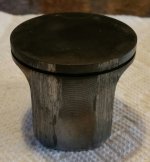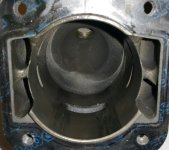crazyal
Super Member
It's not my saw nor have I seen a picture yet but a friend asked me why his saw lost compression. He said he pulled the muffler off and can see grooves in the piston and ring that line up with the edge of the exhaust port. He said the saw had been sitting for a few months before he fired it up and thought maybe it could have been oil separation but he had ran it for 10 or 15 minutes before it just died. It would start back up, run for 20 seconds then die again. He did look at the plug and thought it looked like it was running fine, a medium tan color.
I thought about trying to block off the exhaust and air filter and try to pull a vacuum and see if it would hold it. He lives several states away so I don't know much about the saw (brand or size) but I think he said it was only a couple years old with very little time on it. My personal opinion would be as long as there was enough oil in the gas once you start the saw up the vibrations should be enough to quickly mix it back up but I've always made it a point to give the saw and gas can a good shake to make sure everything is mixed well.
I thought about trying to block off the exhaust and air filter and try to pull a vacuum and see if it would hold it. He lives several states away so I don't know much about the saw (brand or size) but I think he said it was only a couple years old with very little time on it. My personal opinion would be as long as there was enough oil in the gas once you start the saw up the vibrations should be enough to quickly mix it back up but I've always made it a point to give the saw and gas can a good shake to make sure everything is mixed well.

